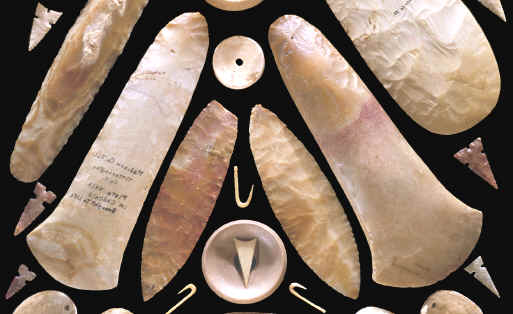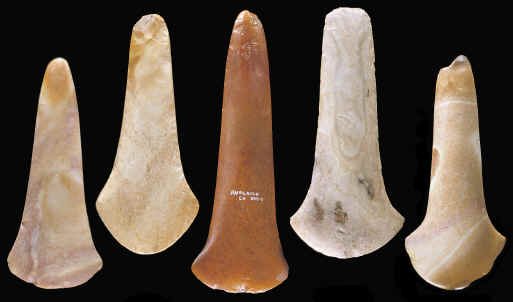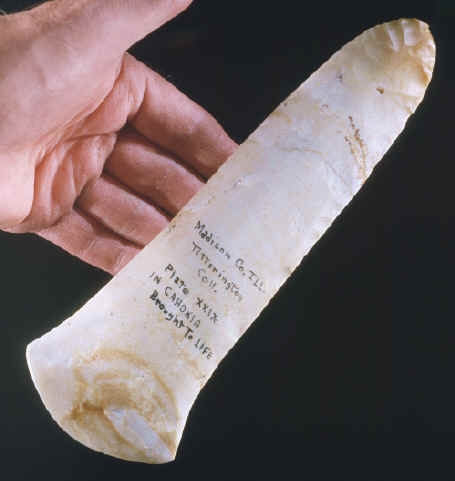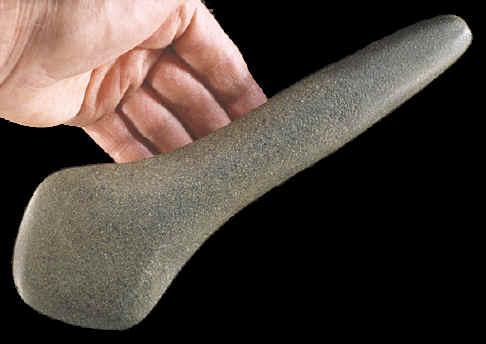|
|
||
|
||
|
"---permit me to register a protest against
the word "spud" which is suggestive of a heavy iron implement in the
hands of a laborer. It is supposed that the word "spud" is retained
because no one has proposed a good substitute."---1910,
Warren K. Morehead, "The Stone Age In North America," Vol. 1.
Many different names have been used to describe stone spuds. The reason probably relates to a lack of knowledge, because no one can say for sure what they were used for. For over a hundred years, some of the names that have been used to describe them are puds, spuds, stone spuds, chert spuds, ceremonial spuds, spatulate spuds, spatulates, flared celts, ceremonial axes, ceremonial celts, ceremonial spades, spade ceremonials, stone ceremonials, maces, elongated axe heads, ritual axes, spud-shaped implements, paddle-shaped implements, paddle-shaped spuds, spade-stones and even bark peelers. But spud and stone spud are the names most often used in recent years. |
||
|
Some people have argued that the word spud shouldn't be used as a name for these impressive artifacts. As long ago as 1910 Warren K. Moorehead wrote in his book, The Stone Age In North America, "a protest against the word spud." He did not like the term and suggested another should be found. But he thought the reason the name was still being used was because no one had found a better substitute. In 1917 in "Stone Ornaments" he again writes "The term "spatulate," as previously stated, was given me by Professor Charles H. Forbes, to take the place of the wretched word "spuds----" But, more often than not, the literature of today still uses the term spud. |
||
|
The word spud is actually a good descriptive term to use for these artifacts. One of its definitions, besides potato, a baby's hand and a dagger is a spade-shaped tool. Many stone spuds, especially the ones with round handles look very much like a spade in outline. The term spud now seems to have won out over all the other names people have been using for more than a hundred years. |
||
|
Spuds represent some of the finest crafted flaked, pecked, ground and polished stone artifacts that were produced during the Late Woodland and Mississippian periods. Many of the examples illustrated in this article relate, by their type, to the Cahokia site in Illinois, the Spiro site in Oklahoma and Caddoan sites in Arkansas. Several spuds have been found in and around the Cahokia Mounds site. Cahokia craftsmen were probably one of the main sources for these items. Cahokia style spuds were being traded to people living hundreds of miles away. Sporadic finds of spuds have been reported as far away as Canada. |
||
| CONTINUE ON TO PAGE TWO | ||
|
"REFERENCES"
1910,
Moorehead, Warren K., "The Stone Age In North America," Vol. 1,
Chapter XXII, "Ground Stone---Problematical Forms, The Spud-Shaped
Implement," pp. 418-430. |
||





